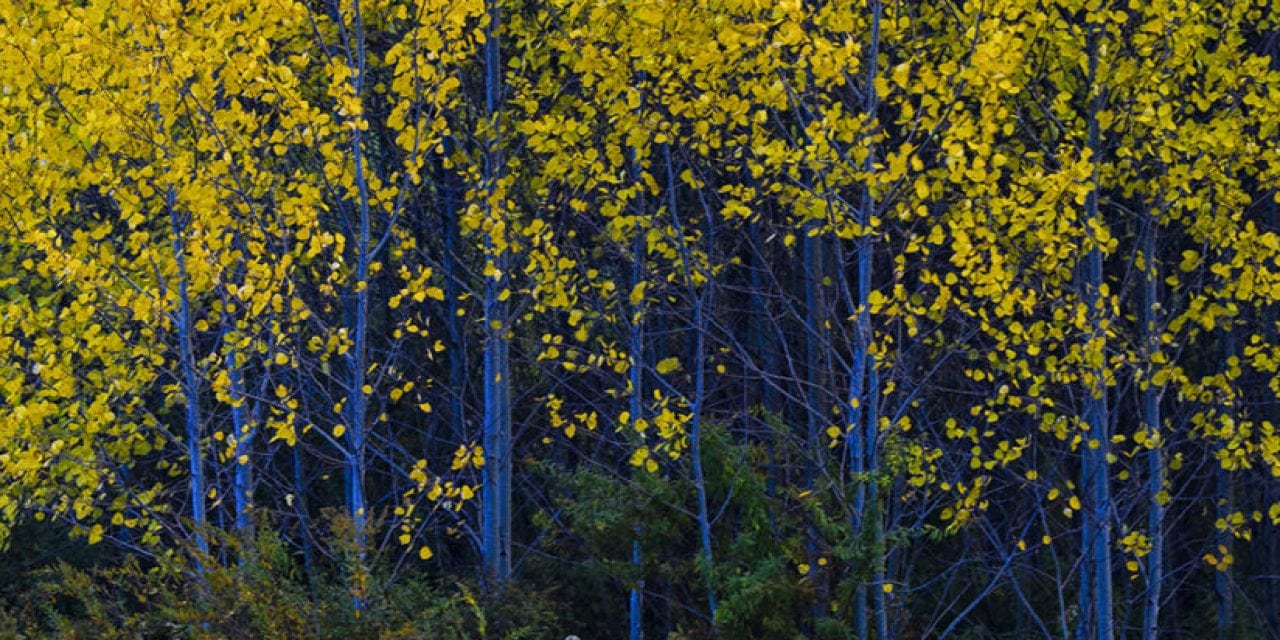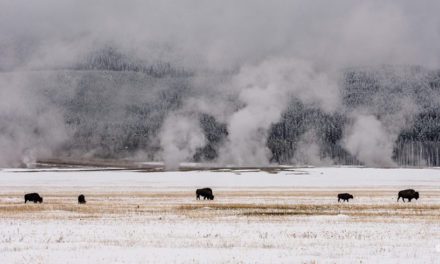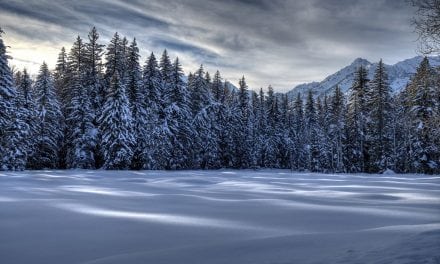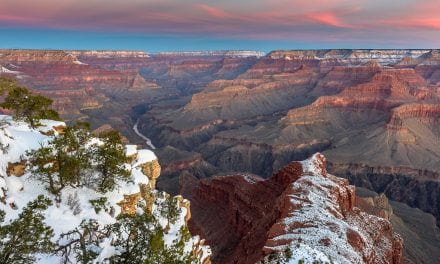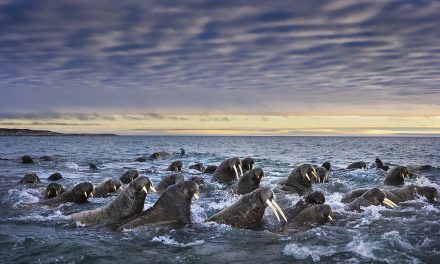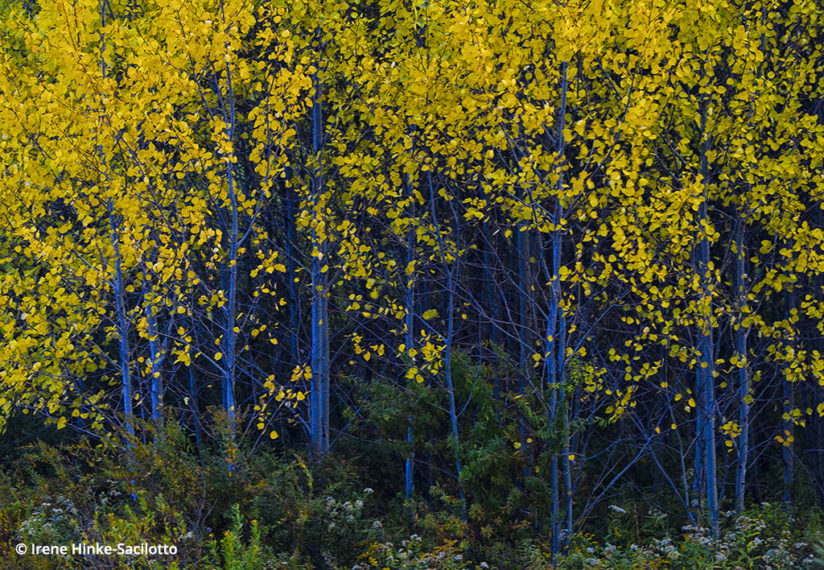
Since the late ‘90s, I have visited West Virginia many times, scouting for photo workshops and conducting programs. Several of my favorite locations are in the northeastern part of the state (Pendleton, Grant, Randolph and Tucker Counties), where I have spent most my time, but I would be remiss if I did not mention a few of my favorite fall destinations farther south in the vicinity of the New River Gorge. Both areas are within a day’s drive of the large metropolitan areas in the Mid-Atlantic region.
The time for peak fall color in West Virginia varies with nightly temperatures, the arrival of frost, rainfall, elevation, wind and other factors. For Blackwater Falls State Park, Canaan Valley, Seneca Rocks, Dolly Sods and the area north of Elkins, color typically peaks anywhere from the end of September into early October. In southern West Virginia, autumn colors peak a bit later, toward the end of October.
Blackwater Falls State Park
The park’s access road is north of the small town of Davis, which lies south of Oakland, Maryland. Its main attraction is the 60-foot-tall Blackwater Falls. There are two overlooks, with the first near the visitor center. Here a trail with approximately 200 wooden steps descends to the bottom of the falls. There are several platforms and points along the trail where you can photograph the falls from different elevations. Using a wide-angle lens, you can frame the falls or isolate portions with a telephoto lens. The second overlook is on the other side of the Blackwater River and involves a short walk to a platform where you can photograph the falls from a higher viewpoint. By standing at the far end of the platform, you can frame the falls surrounded by colorful foliage.
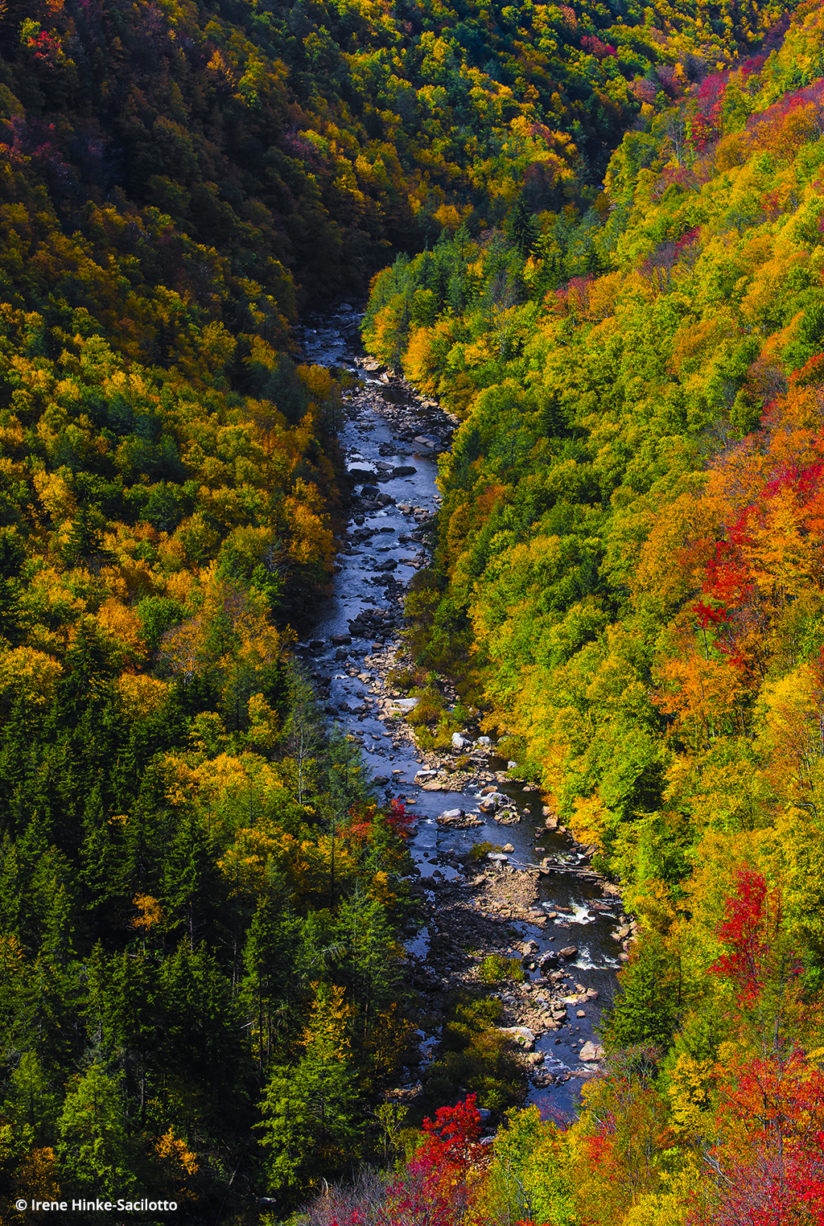
Not far from the park’s visitor center is Pendleton Point. The overlook provides impressive views of Blackwater Canyon and the river below. When leaf color peaks, the canyon walls are peppered with splotches of bright red, orange, yellow and green. In the morning, my favorite viewpoint for photography is from the rocks at the far right of the overlook.
Down the hill from Pendleton Point is Pendleton Lake. As temperatures drop at night, fog often develops in low areas and above the surface of water. Then as the sun rises, the fog slowly lifts, revealing what lies beneath. I use the fog to my advantage when photographing. I select close, colorful points of interest for foreground, backed by ghostly shapes and colors behind.
My favorite morning location is Lindy Point. It is located on Canaan Loop Road, which can be reached by following the main park road past Blackwater Lodge to its end. After driving a short distance, you will come to a small parking area on the right and a trail marker. The relatively easy hike ends at a platform built on a rock outcropping with a view looking south down Blackwater Canyon. I often use the boulders around the platform as a foreground in my images. I typically arrive just as the morning sun begins to light the canyon. I prefer soft light to reduce the glare off of surfaces and avoid too much contrast between the rocks and canyon wall.
Canaan Valley Resort
South of Davis on West Virginia Route 32 is Canaan Valley Resort and Conference Center State Park. Like many West Virginia parks, it has a lodge, restaurant and golf course, but it also has a number of scenic trails and overlooks.
From the main highway, there is a paved road that runs through the park, providing access to the nature center, trails, lodge and cabins. If you continue down the main road past the entrance to the lodge, you will find Balsam Swamp Overlook, with sweeping views of the area and the possibility of spotting a black bear. Last time I was there, a beaver pond just below the overlook was reflecting fall colors from the surrounding hillsides. To capture as much of the water’s surface as possible, I shot from a hill on the opposite side of the road with great results.
If you continue along the park road, it descends through a large field often frequented by deer and a wetland where you might see beaver swimming in one of the channels. Scattered throughout the park are maples, oaks and a few aspens. In the fall, they are beautiful when back-lit by the sun. For best results, spot meter off the leaves to avoid the background from exerting undue influence over the exposure.
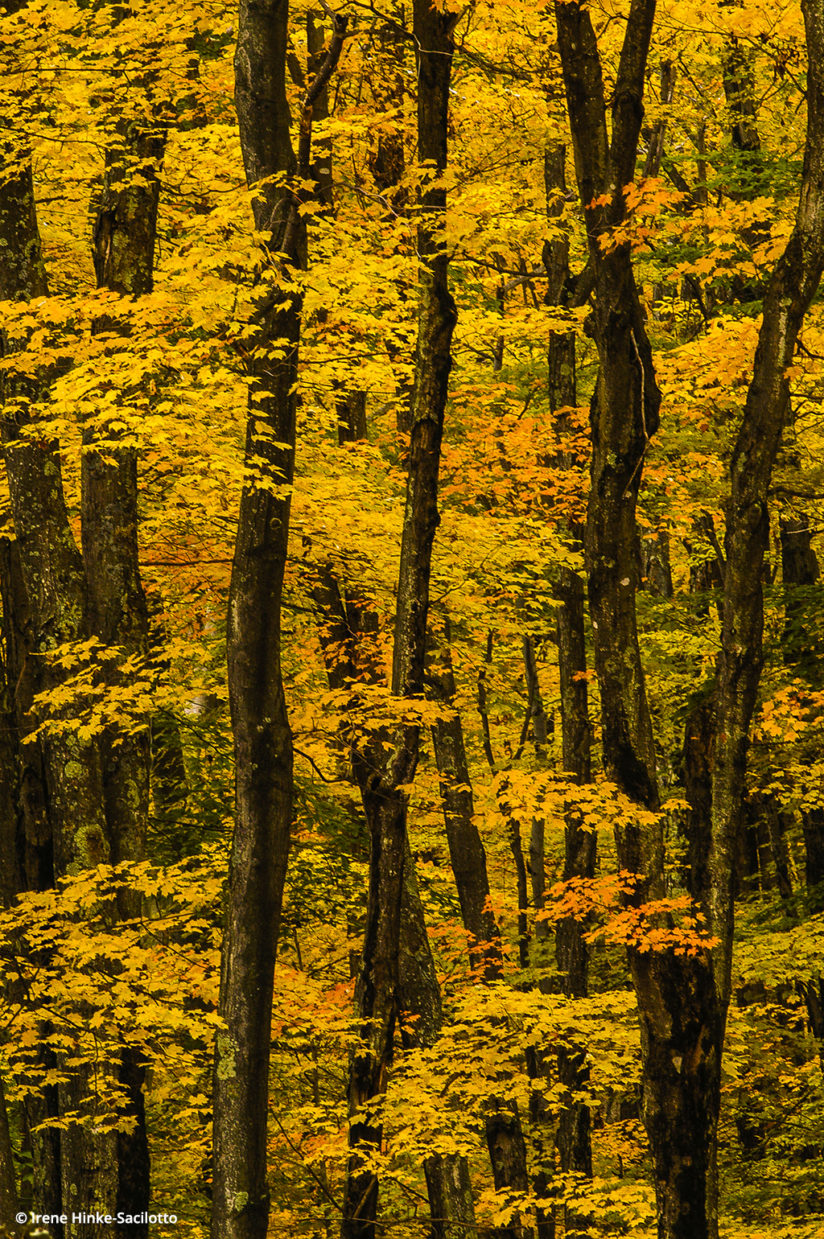
The park road ends at the golf course parking lot, where you can access a forest trail connecting to a path along the Blackwater River. Views of the river, wetlands and surrounding mountains are especially nice in the morning. Along the way, you will find stands of ferns turned yellow by frost and fallen leaves decorating ground cover comprised of club mosses and lichens. The area is frequented by geese, beaver and deer that, if included in your photos, will add another dimension to your images.
Across Route 32 from the main drive through the park is a ski slope with a lift that often operates in the fall, taking hikers to the top of the mountain for a bird’s-eye-view of Canaan Valley. Once there, you can follow the trail to the left and hike along ridge uphill, eventually reaching Bald Knob for my favorite panoramic views of the valley. The rock outcroppings of the knob provide stark contrast to the fall leaf color below.
Seneca Rocks
In my quest for fall color, I will typically follow a circular route south from Canaan Valley on Route 32 to the town of Harman and on to Route 33/55 toward Seneca Rocks. Seneca Rocks is a shear sandstone formation rising 900 feet vertically above the North Fork River. In autumn, from Route 28/33 and the visitor center parking lot, you can photograph the outcropping, with colorful trees populating the lower elevations.

If you have time, you can hike the 1.3-mile trail up the mountain, following the switchbacks and steps to reach viewpoints overlooking the surrounding countryside from high on the ridge. Climbers frequent Seneca Rocks, so you may wish to include them in your photos for added interest and a splash of color.
Dolly Sods Wilderness
Dolly Sods is a high, windswept plateau at nearly 4000 feet at its highest point. Fall color here often arrives slightly before it does at Canaan Valley. Forest Road 75 is a gravel road that follows the ridge across the plateau. Trails lead to rock faces overlooking the Allegheny Mountains. This unique area resembles northern Canada more than West Virginia. Winters are harsh, with strong westerly winds. At the higher elevations are stunted one-side red spruce trees, heath barrens, and fields of blueberry and huckleberry bushes. In low areas are bogs with sphagnum moss, cotton grass, cranberries and beaver ponds.
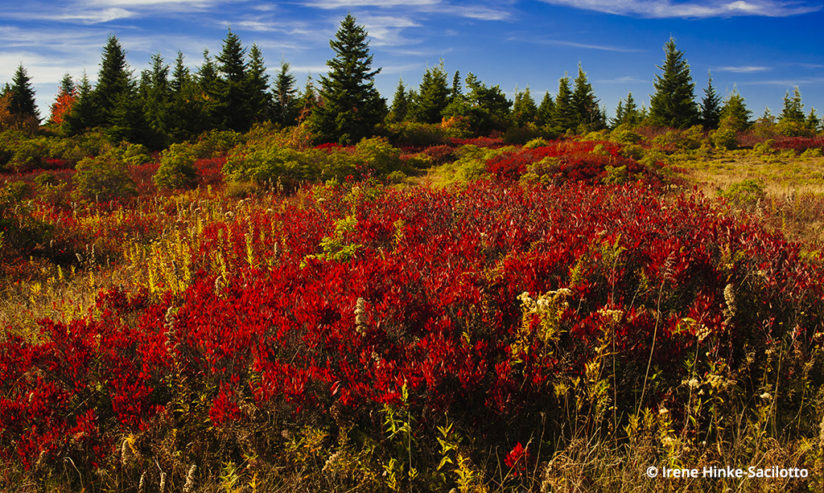
In the fall, this area is a “must visit.” After a hard frost on the higher sections of the plateau, the leaves of the blueberry bushes turn red. When backlit by late afternoon sun, they glow. In places, there are huge lichen-covered boulders contributing contrast to the scene. For best results, the sun must be low in the sky. Your lens is pointed toward the bushes with the sun behind, which means that lens flare is often a serious problem as the light bounces off of the lens’ internal glass surfaces. Flare may appear as random bright spots in the image or as a wash light across the frame, reducing color intensity and image sharpness. Most likely, your lens shade will be of little help resolving the problem. Often, I will shade the front of the lens by holding a jacket, black card or umbrella over it. In the viewfinder, you can see if you have been successful. Take care that the object used to shade the lens does not appear at the edges of the frame. Depending on your shooting angle, a polarizer may help intensify colors.
Bear Rocks at the northern high end of the ridge road is another location favored by photographers in the fall. Trails meander through a boulder field and lead to a rock face overlooking the Allegheny Mountains and colorful slopes below. Mountain ash with red berries can add a splash of color to your images. Be careful if climbing on the boulders. They can shift with your movements, and missteps can have serious consequences.
To reach the top of Dolly Sods, you can approach from several directions, but all involve driving up relatively steep and often dusty gravel roads with hairpin turns, ruts and at times washboard-like surfaces. From Canaan Valley, go south on Route 32 until you see the sign on the left directing you to Dolly Sods on Laneville Road. From Seneca Rocks, drive north on Route 28/55 turning left on Jordan Run Road. Keep to the left on to Forest Road 19 that leads to the top of the plateau.
Southern West Virginia
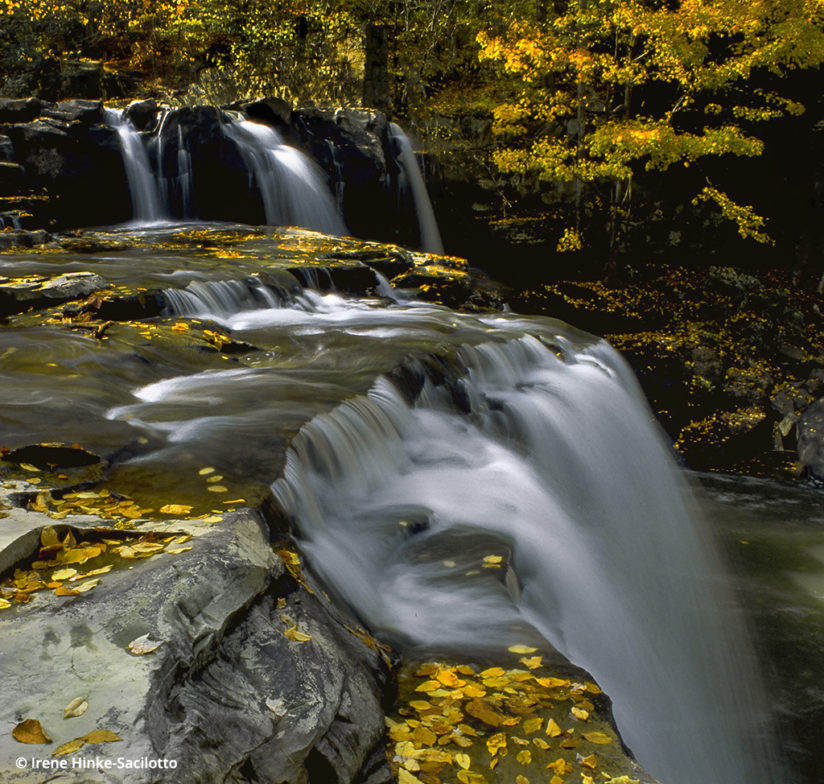
For your fall pilgrimage to southern West Virginia, a few of my favorite locations near the New River Gorge include the New River Gorge Bridge and trails off of Lansing-Edmond Road leading to the canyon rim. Fayette Station Road, Sandstone Falls, Grandview, Glade Creek Grist Mill in Babcock State Park, Hawks Nest State Park and Cathedral Falls near Gauley Bridge, as well as the historic railroad town of Thurmond, are all photogenic locations to consider.
See more of Irene Hinke-Sacilotto’s work at ospreyphoto.com.
The post Appalachian Autumn: In Search Of Fall Color In West Virginia appeared first on Outdoor Photographer.

